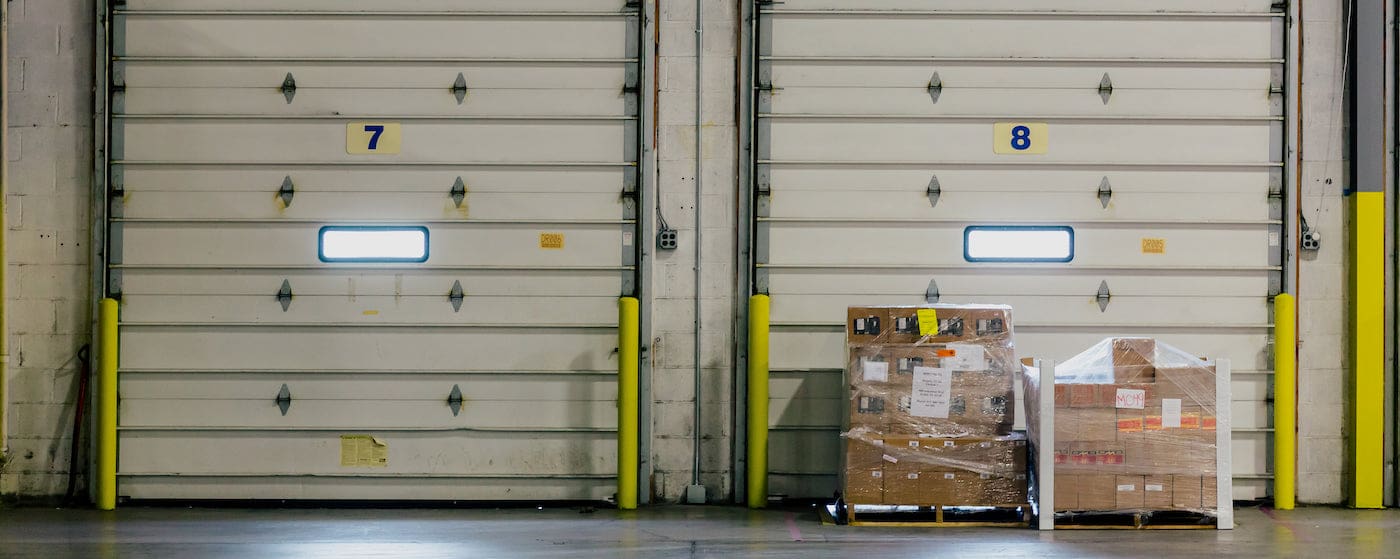Table of Contents
** Minutes
What is the upstream supply chain?
How the upstream supply chain has been affected in the 2020s
How the downstream supply chain has been affected in the 2020s
How to better manage your upstream supply chain
How to better manage your downstream supply chain
In an ecommerce business, supply chain performance is one of the key factors affecting the performance of the business as a whole. If the supply chain isn’t moving as seamlessly as it should, it could cause disruptions further down the line, and even result in delivery delays and customer disappointment. As such, businesses need to carefully manage their upstream supply chain operations to ensure that there are no disruptions downstream.
This post will take a closer look at the upstream supply chain and how it has been affected in recent years. It will also explore some of the best tactics to better manage this aspect of the supply chain. Let’s get into it.
What is the upstream supply chain?
The upstream supply chain refers to the flow of inventory in the pre-production stage, mostly in relation to the organisation’s suppliers. It involves all the activities related to the sourcing and transportation of raw materials needed in the manufacturing process.
Meanwhile, the downstream supply chain involves activities post the manufacturing process, which would mean getting the finished goods to the end consumer.
How the upstream supply chain has been affected in the 2020s
Global events over the past few years have greatly impacted the upstream supply chain. Starting with the COVID-19 pandemic, which resulted in nationwide lockdowns that put a temporary stop to raw materials transport. Since the majority of raw materials were imported from China, which was the first to be impacted by the pandemic, there was a long and massive disruption in transportation links and raw materials supply.
Moreover, 47% of companies also reported a disruption in their workforce due to the pandemic. This was followed shortly by the Great Resignation, with resignation rates in the manufacturing industry almost hitting 60% in late 2021. Long bouts of labour shortages meant that many activities in the upstream supply chain had to be put on pause or significantly delayed, resulting in slower supply chain velocity.
Even as the pandemic eased down and the global supply chain started to pick back up, other events such as the war in Ukraine began to cause other types of issues. For example, there’s a shortage of wheat and oil supplies due to trade disruptions in the region.
How the downstream supply chain has been affected in the 2020s
Just like the upstream supply chain, downstream activities have also been impacted by recent global events. Lockdowns and labour shortages undoubtedly led to supply chain bottlenecks as many warehouses had to be shut down, resulting in fulfilment and distribution processes being upended. Whichever shipping couriers were still operational were stretched beyond capacity, which meant that customers had to wait for much longer to receive their goods.
Even as the supply chain began to resume as normal, there were additional unexpected incidents that highlighted the need for increased supply chain resilience. The 2021 Suez Canal blockage, for example, put a temporary stop to a major portion of the global shipping industry. Each day of the blockage cost anywhere between $14 million and $15 million in lost revenue.
Further, the Great Resignation did not leave the logistics industry unscathed. In fact, the trucking industry was short about 80,000 employees, meaning that there were much fewer vehicles to transport goods downstream in the supply chain. Major ports such as the ones in Los Angeles and Long Beach consistently saw massive congestion since they experienced staffing issues.
How to better manage your upstream supply chain
As you can imagine, disruptions and delays in the upstream supply chain are often unexpected and unpredictable. While it may be hard for a business to control and prevent these issues, there are ways to mitigate the impact with better supply chain management. Here are a few ideas to help you out.
Think and plan ahead
You can’t underestimate the importance of good supply chain planning if you’re going to efficiently manage your upstream supply chain. Make sure you have an accurate idea of lead times in relation to your production and procurement processes. This will allow you to improve your inventory planning accordingly so you don’t get too seriously affected by unexpected disruptions.
For example, reordering inventory when stock dips below a certain level instead of when you’re completely out of stock gives you sufficient time to come up with a backup plan, even if there’s an issue on the supplier’s end.
Additionally, logistics planning should also be a top priority. This involves figuring out how to get your inventory orders to your factories or warehouses as efficiently as possible. For instance, you may want to consider multiple transportation modes, like air and ocean freight, to decide which is the best option for the type of inventory you want to transport.
Diversify suppliers
Working with multiple suppliers is one of the most effective ways to improve your upstream supply chain management. That way, you can always have a backup option even if your main supplier or manufacturer experiences issues with production. Even with a diversified supplier base, keep in mind to ensure proper supplier relationship management so you have a reliable set of suppliers to work with.
Stay up-to-date
One crucial step is to make sure that you’re always up-to-date on the latest trends and events that could be impacting your upstream supply chain. This allows you to anticipate issues before they turn into something big and then come up with a solution or contingency plan for your business. For example, rising political tension in a country where you get most of your raw materials could indicate a need to look to suppliers in a different country, so your supply doesn’t get affected too seriously.
Use data and KPIs to identify pressure points
Keeping a close eye on your supply chain metrics is another crucial step as this allows you to identify areas that may look problematic and need improvement. Issues in certain supply chain KPIs such as on-time delivery rate could be traced back to problems further upstream. Similarly, issues in your upstream supply chain activities could affect some warehouse KPIs as well.
Beyond this, some of your inventory management KPIs could be used to make improvements to your upstream supply chain management. For example, you could use your lead time data to determine how long you typically have to wait for new inventory and then make informed decisions about when to make a replenishment order. Additionally, your data on your safety stock, stock availability, dead stock, and inventory days on hand could help inform your procurement planning.
ShipBob offers a free analytics reporting tool that will let you track all the crucial supply chain metrics in one place. With this tool, you can get real-time visibility into your inventory data and discover key insights that can inform how you manage your upstream supply chain.
How to better manage your downstream supply chain
When it comes to downstream supply chain activities, businesses have a little more control over how it’s managed. Therefore, they can also have more control over disruptions and delays. Here are a few tips to help you improve how you manage the downstream supply chain so you can improve your overall ecommerce performance.
Be communicative with customers
Sometimes, it’s not just the waiting that results in customer frustration. Having to follow up regularly and not hearing anything from the business are often the main reasons why customers get frustrated. This is why it’s important to maintain supply chain visibility and ensure that your customers are updated with the latest information about their orders.
Make sure you offer real-time order status updates, so they know exactly what’s happening and when they’ll receive their orders. This will ensure that your customers always stay up to date, even if there are unexpected delays and disruptions.
Use demand forecasting metrics
Stockouts can cause an undesirable disruption to your downstream supply chain. As such, it’s crucial for businesses to plan their inventory needs ahead of time by forecasting demand and restocking their inventory on time. ShipBob offers demand forecasting tools that use a combination of historical sales data and inventory data to make accurate predictions about future inventory needs. This enables you to procure the right amount of inventory to prevent stockouts, which minimises downstream supply chain issues.
Outsource logistics
Your fulfilment and shipping logistics play a vital role in the seamlessness of your downstream supply chain operations. This is where many companies get stuck because they’re unable to efficiently fulfil customer orders. Outsourcing your logistics can be the fastest and simplest way to solve this since you’ll have experts to handle most of your downstream supply chain activities.
ShipBob lets you outsource fulfilment so you can have logistics professionals managing most of your fulfilment operations. This includes activities such as inventory storage and management as well as picking, packing, and shipping. With world-leading automation tools, ShipBob streamlines your downstream supply chain tasks so they can move seamlessly with minimal disruptions.
How ShipBob optimises your supply chain efficiency
ShipBob offers various solutions to optimise both the upstream and downstream aspects of your small business supply chain. You can enjoy a seamless upstream supply chain with FreightBob, ShipBob’s end-to-end managed freight and inventory distribution program. This enables you to experience 2x faster transit times as inventory is loaded onto faster ships. Moreover, guaranteed weekly sailings mean there’s better reliability and a lower risk of disruptions.
“Thanks to ShipBob’s freight program, we had no stress and were super well-stocked for the rest of the year and into 2022, without any kind of inventory issues that have plagued us in the past.
The first shipment that we had with FreightBob…I mean, it was amazing. We beat the average freight time it’s taken to move something from Asia to our warehouse in LA by at least 50% — and it was easier and cost us less money. What’s not to love about that?”
Nathan Garrison, Co-Founder and CEO of Sharkbanz
ShipBob also offers advanced proprietary tools with seamless integration to support supply chain digitization. This allows you to improve visibility throughout the chain while also enabling automation to improve the efficiency of your operations. Further, you get a free analytics reporting tool to keep track of vital supply chain metrics and quickly identify pressure points.
“ShipBob provides us with specific reporting that helps us make decisions that directly benefit the health of our business. It shows their dedication to transparency — things like actual transit times and whether they’re hitting their service-level agreements. They are really committed to their customers and keeping themselves accountable.”
Pablo Gabatto at Business Operations Manager at Ample Foods
Get started with ShipBob
Interested in learning more about how ShipBob can help make your supply chain more efficient? Connect with our team to get started.
Upstream and downstream supply chain FAQs
Below are answers to common questions about upstream and downstream supply chains.
What is an example of downstream supply chain?
The process of fulfiling customer orders is a prime example of downstream supply chain.
What are examples of upstream players in a supply chain?
Suppliers and manufacturers are the key upstream players in a supply chain.
How can ShipBob help with supply chain logistics?
ShipBob offers services and tools that can be used to streamline most of your supply chain logistics. From end-to-end managed freight programs to fulfilment outsourcing to supply chain analytics–there are many solutions that can be used to optimise your supply chain logistics.






